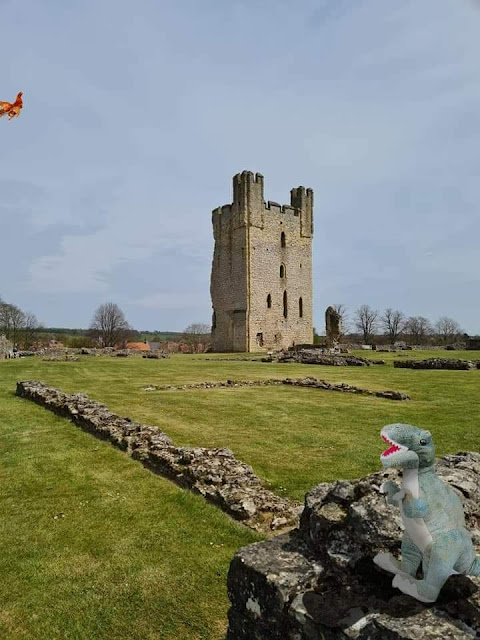Helmsley Castle and Callum made a friend!

Callum made it to Helmsley Castle! The first castle on the site was built around 1120. It was constructed of wood. In 1186 Robert de Roos, a relative of the original owner started work on converting the castle into a stone building. William's son, Robert, inherited the castle and was Lord of Helmsley from 1258 to 1285. His marriage to Isabel d'Aubigny (heiress to Belvoir Castle ) funded the building of the new hall and kitchen, as well as strengthening the castle. The castle remained in the de Roos family until 1478 and between them the family members were responsible for building the castle's, towers, gateways, chapel and defenses. In the southern part they built a new hall and the east tower in an area used as exclusively for the family; now granted the title 'Lords of Helmsley', and the northern half with the old hall was used by the castle's stewards and officials. In 1478 the castle was sold to Richard, Duke of Gloucester; later Richard III, a...



